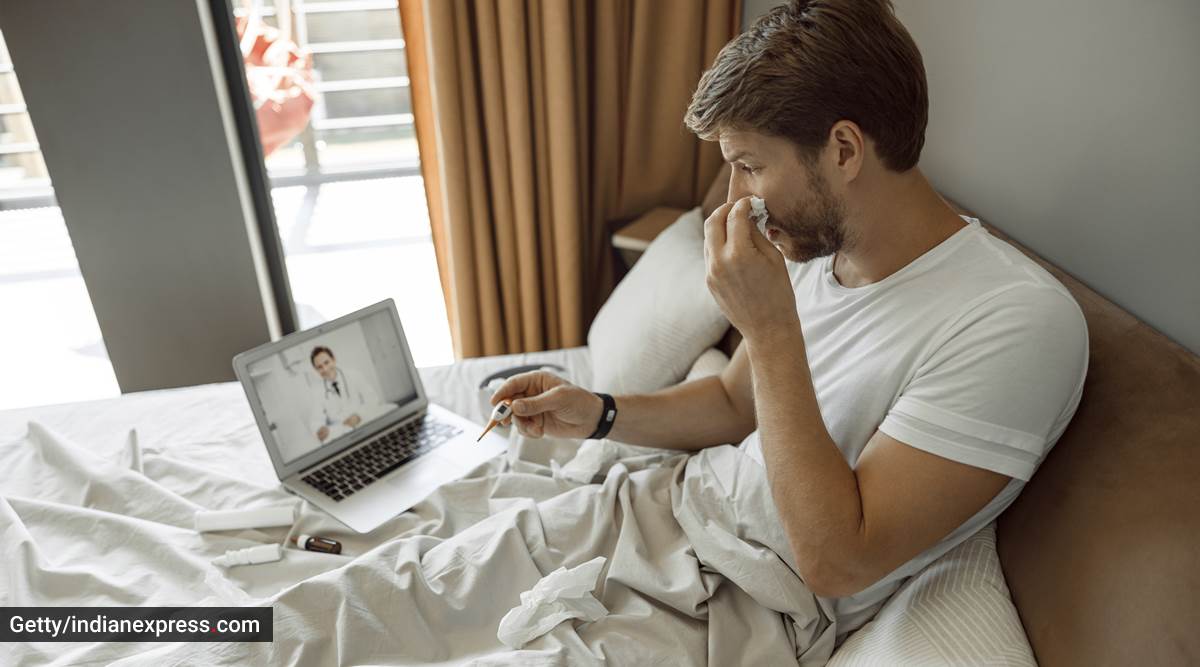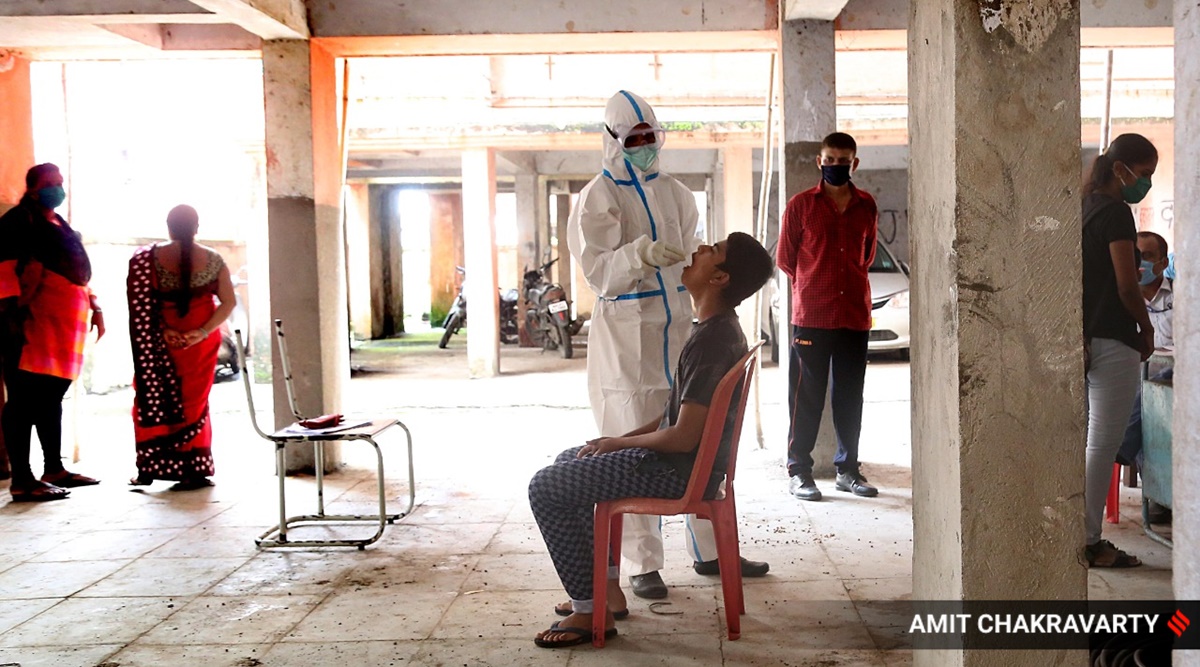 Covid testing in progress at MHADA colony of Maharashtra Nagar in Mumbai on Thursday.
Covid testing in progress at MHADA colony of Maharashtra Nagar in Mumbai on Thursday.Coronavirus India News Live Updates: India’s coronavirus tally crossed the 52-lakh mark on Friday after 96,424 fresh cases were reported in the span of 24 hours, and stood at 52,14,678. With 1,174 deaths, the death toll now stands at 84,372. There are 10,17,754 active cases and at least 41,12,552 people have been cured/discharged from hospitals.
Meanwhile, India’s coronavirus mortality rate at 1.64 per cent is lowest in the world and the Centre is making efforts to reduce it down to less than 1 per cent, Union Health Minister Harsh Vardhan told the Rajya Sabha on Thursday. While the total cases may have crossed 50 million, active cases are less than 20 per cent, he added.
Globally, nearly 30 million people have been infected with as many as 939,427 fatalities. The United States continued to the worst affected followed by India and Brazil. India, however, remained on top of the recoveries chart. Robert Redfield, director of the Centres for Disease Control and Prevention (CDC) in the United States, has said face masks offered much better protection against the infection than a vaccine would.
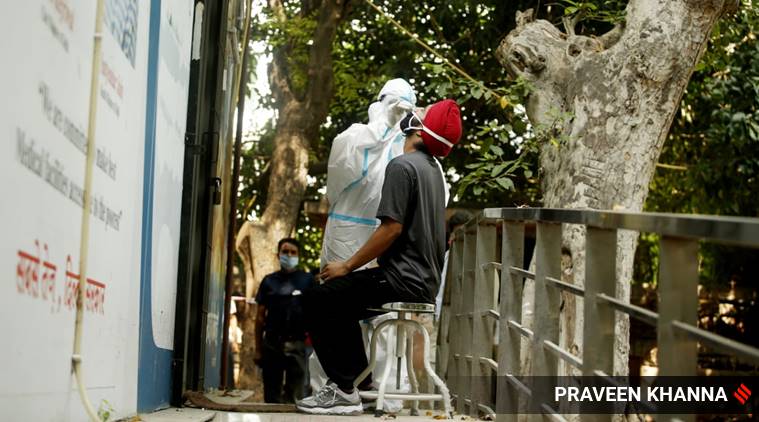 A health worker takes swab sample at a mohalla clinic in New Delhi on Wednesday
A health worker takes swab sample at a mohalla clinic in New Delhi on Wednesday
Arunachal Pradesh's COVID-19 tally rose to 6,851 on Friday as 159 more people, including 15 security personnel, tested positive for the infection, a senior health official said. The Capital Complex region reported the highest number of new cases at 88, followed by West Kameng (11) and Lower Subansiri (11), he said. Twelve personnel of the Border Roads Organisation (BRO) and one of the National Disaster Response Force (NDRF) have also contracted the disease, he said. As many as 180 more people have recovered from the disease and were discharged from hospitals on Thursday, the official said. (PTI)
India's coronavirus tally crossed the 52-lakh mark on Friday after 96,424 fresh cases were reported in the span of 24 hours, and stood at 52,14,678. With 1,174 deaths, the death toll now stands at 84,372. There are 10,17,754 active cases and at least 41,12,552 people have been cured/discharged from hospitals.
Jharkhand's COVID-19 tally rose to 67,100 on Friday as 1,026 more people tested positive for the infection, while 11 fresh fatalities pushed the state's coronavirus death toll to 590, a health official said. The fresh infections have taken the number of active cases in the state to 13,703, while 52,807 people have been cured of the disease so far, he said. The state has tested 20,431 samples for COVID-19 in the last 24 hours, the official added. (PTI)
Kerala Govt has issued revised instructions for quarantine norms for guest workers, specialized workers visiting Kerala from other states, and SOPs for registration in the Covid-19 Jagratha portal to ensure proper quarantine. Employees who reach Kerala will remain in quarantine for 14 days. "If the guest workers are found positive, he shall be segregated and shall not be allowed to work till he recovers," the instruction issued added.
The Indian Council of Medical Research (ICMR) said it tested 6,15,72,343 samples till Thursday, while 10,06,615 samples were tested on Thursday.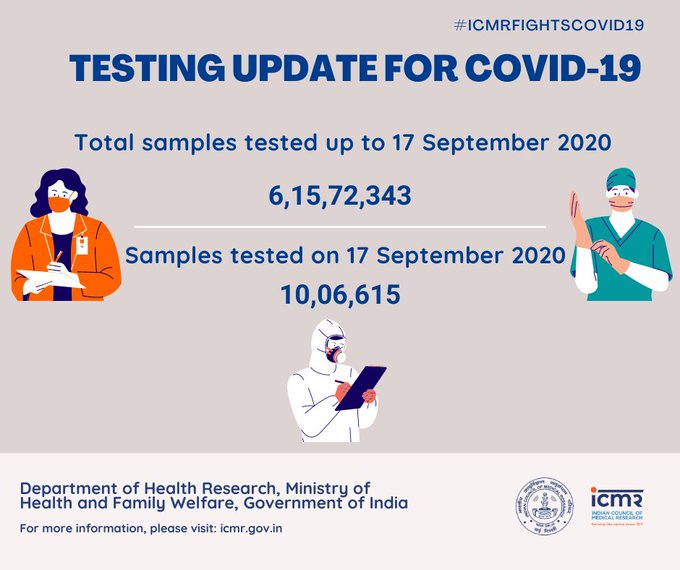
After Kerala reported India’s first Covid infection on January 30, in a medical student who had returned from China, the state focused on expatriates and international travellers but the subsequent outbreak originated mainly from three other states, a new genome sequencing study has suggested. Most of the later cases could be traced to Maharashtra, Odisha and Karnataka, according to the study conducted jointly by the Government Medical College in Kozhikode and two of India’s premier science institutes — CSIR-Institute of Genomics and Integrative Biology, and Academy of Scientific and Innovative Research. Read the study here
Odisha's COVID-19 tally rose to 1,67,161 on Thursday as 4,241 more people, including a BJP MLA, tested positive for the infection, while 13 fresh fatalities took the state's coronavirus death toll to 669, a health official said. The state had reported its highest single-day spike of 4,270 coronavirus cases on Wednesday. Odisha also registered recovery of as many as 3,607 patients taking the number of people cured of the disease to 1,33,466 which is 79.84 per cent of the state's total caseload.
As the number of Covid-19 cases in UP continued to increase and reached over 3.36 lakh, the government on Thursday said that five districts — Lucknow, Kanpur Nagar, Prayagraj, Muzaffarnagar and Meerut – have highest test-positivity ratio, an indicator of the spread of disease. The government, however, did not reveal the positivity rate of these five districts. The state’s test-positivity rate as on Thursday stood a little over 4%. Notably, all the five districts have active cases in four digits with Lucknow and Kanpur Nagar being the worst-hit: 9,775 and 4,693, respectively.
In the past 24 hours, Lucknow recorded 908 new cases and six deaths – once again the highest in the state – followed by Kanpur Nagar (413 and 6) and Prayagraj (367 and 2). While Meerut recorded 254 new cases and three deaths in the past 24 hours, Muzaffarnagar 107 new cases and two deaths. Read more here
US biotechnology company Moderna has said it would know about the effectiveness of its coronavirus vaccine by November. Moderna’s vaccine candidate is one of the three undergoing large-scale phase-3 clinical trials in the United States, in which 30,000 participants are being enrolled. Company CEO Stephane Bancel has said if the vaccine candidate was found to be at least 50 per cent effective, the minimum bar set by the US Food and Drug Administration for approving a vaccine, it would immediately move to apply for an emergency use authorisation.
Moderna has never made a vaccine that has been approved. For coronavirus, it is using a genetic approach that has never produced a successful vaccine for any disease. But the company enjoys the confidence and backing of the US government which has pumped in more than a billion dollars to help the company accelerate the vaccine development, and pre-booked hundreds of millions of doses, when it becomes available. Track vaccine updates here
Wishing people on the occasion of Mahalaya, Chief Minister Mamata Banerjee on Thursday urged people to help those in need during the current Covid-induced crisis. Though the pandemic had changed everyone’s lives, it should not dampen festivities, she added. “On the auspicious occasion of Mahalaya, I extend my warm regards to one and all. Although #COVID19 has restricted how we celebrate festivals, we shall not allow it to dampen the spirit of this Durga Puja. To this end and to lighten up every home, I undertake #MahalayaProtishruti [Mahalaya Pledge],” she tweeted.
Newly elected Rajya Sabha member Ashok Gasti, who was admitted to a private hospital after testing positive for the novel coronavirus, died on Thursday night, the hospital said. Fifty-five-year-old Gasti, who was admitted to Manipal Hospital on Old Airport Road on September 2 and diagnosed with severe COVID-19 pneumonia, passed away at 10.31 pm, hospital director Manish Rai said in a statement.
Vice President M Venkaiah Naidu, Prime Minister Narendra Modi and Union Home Minister Amit Shah condoled the demise of Gasti. "Rajya Sabha MP Shri Ashok Gasti was a dedicated Karyakarta who worked hard to strengthen the Party in Karnataka. He was passionate about empowering the poor and marginalised sections of society. Anguished by his passing away. Condolences to his family and friends. Om Shanti," Modi tweeted.
India now accounts for 1 in every 6 confirmed cases of coronavirus infection in the world, which is roughly the same as India’s share in the global population. The silver lining is that India is so far contributing only 1 in 12 coronavirus-related deaths in the world. This, of course, is likely to change as more people get infected; the daily numbers are now almost 1 lakh. With a lag of two to three weeks, a proportionate increase in the number of deaths can be expected. Already, more than 1,000 deaths are being reported every day from across the country.
As normal activities resume despite the rising number of infections, the biggest challenge is to prevent the number of deaths from spiralling upward. A rise in the fatality rate can seriously jeopardise the move towards normalcy, and slow down the recovery process. That is why local administrators and healthcare workers are being constantly instructed to make every effort to prevent as many deaths as possible. Read the analysis here
With over 500 people testing positive for the novel coronavirus, Tripura's Covid-19 tally on Thursday reached 20,699. With six more fatalities, the death toll in the states has also risen to 228. The state's COVID fatality rate has also shot up to 1.10 per cent, one of the highest fatality rates in North-East India.
Aiming at bringing down the coronavirus death rate to below one per cent in West Bengal, it's health department will deploy medical specialists at a number of COVID-19 hospitals in the state, news agency PTI reported. Teams of specialists in general medicine, chest medicine, anesthesiology, nephrology, cardiology, and neurology from different medical colleges will be visiting nearby COVID-19 hospitals.
Union Home Minister Amit Shah, who recently recovered from COVID-19 and was admitted to AIIMS for a complete medical checkup, was discharged on Thursday evening, officials said.
He was admitted to the premier hospital on September 12. Earlier in the day, Shah had addressed an event in his constituency Gandhinagar in Gujarat through video conference.
On August 2, Shah, 55, had said on Twitter that he had tested positive for COVID-19. He had undergone treatment at Medanta Hospital and was discharged after he recovered from the disease.

Daily wearers of eyeglasses might be less likely to be infected with the novel coronavirus, say scientists who call for further, large-scale studies to assess the relationship between eye protection and the risk of contracting COVID-19.
The single-centre study, published in the journal JAMA Ophthalmology, assessed 276 hospitalised COVID-19 patients at Suizhou Zengdu Hospital in China, and observed that those who wore eyeglasses for an extended period of time were relatively uncommon among the study participants.
Based on this observation, the researchers, including those from The Second Affiliated Hospital of Nanchang University in China, speculated that wearing eyeglasses for more than eight hours per day may be protective against the novel coronavirus infection.
They hypothesised that this may be due to eyeglasses acting as a barrier that reduces the frequency with which people touch their eyes.
A purported video showing nursing and security staff slapping a patient after pinning him down to the ground in the Covid-19 wing of the state government-run Pandit Deendayal Upadhyay (PDU) Hospital in Rajkot went viral on Thursday. However, the hospital administration claimed that the staff was merely restraining an unruly patient.
In the 55-second video, a paramedic is seen pressing the patient to the ground with his knee even as others hold him down and security guards, one of them weilding a baton, look on. “Didn’t I tell you not to do it,” the paramedic wearing a white-coloured PPE kit is heard telling the pleading patient. Full report here.

Drugmaker Dr Reddy's Laboratories (DRL) announced on Wednesday (September 16) that it will distribute 100 million (10 crore) doses of Russia’s Sputnik V Covid-19 vaccine in India after conducting final-stage human trials and receiving regulatory clearances here.
Should India’s top drug regulatory body sign off on phase 3 trials in the country, Sputnik V will replace Serum Institute of India’s (SII's) ‘Covishield’ as the frontrunner in the race to produce a Covid-19 vaccine for India. Click here to read our explainer.
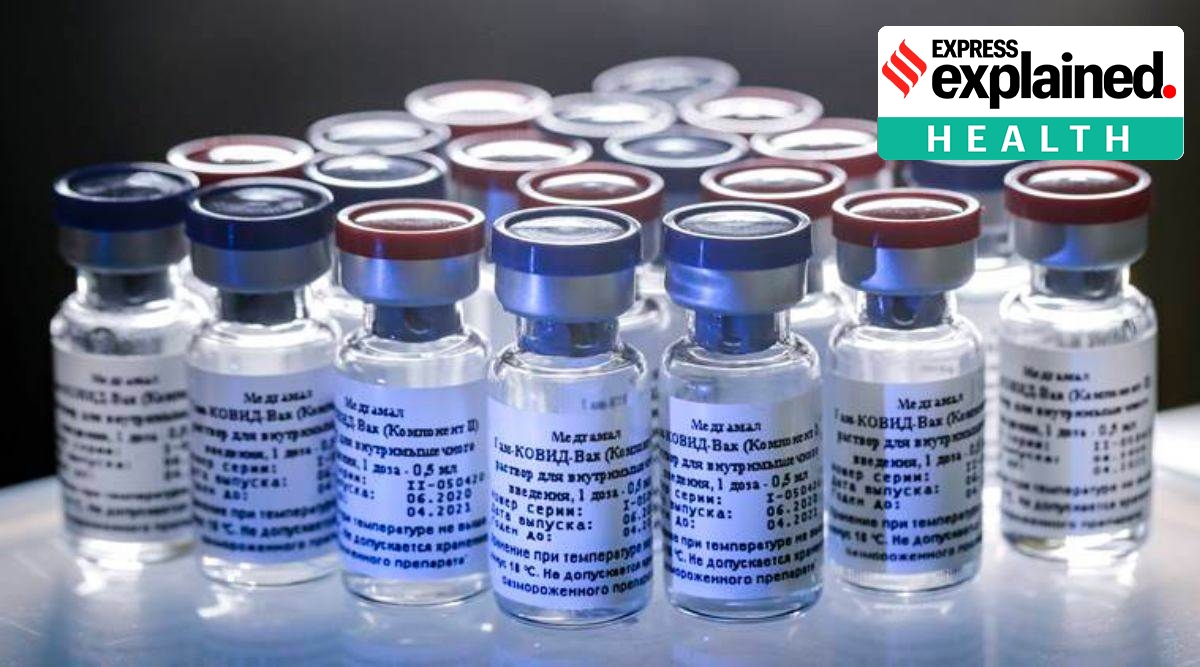
The key to slowing the spread of COVID-19 infection is to stay at home and stay clean at all times. Home hygiene is being focused on now more than ever. While some people may think that because they are home, they may be safe from the virus, it may not always be the case, since any kind of exposure to any potentially-infected person may risk transmission.
Dr. Manjeet Singh Arora, Sr General Physician, Fortis Hospital, Mulund says the COVID-19 virus has created the need for emergency health structures across the world; most people who have fallen sick with COVID-19 have experienced mild to moderate symptoms and have successfully recovered without special treatment.
“It is understood that the virus that causes COVID-19 is mainly transmitted through droplets generated when an infected person coughs, sneezes, or exhales. These droplets are too heavy to hang in the air, and quickly drop to the floor and other surfaces. You can be infected by breathing in the virus if you are within close proximity of someone who has COVID-19, or by touching a contaminated surface and then your eyes, nose or mouth. The goal of the self-quarantine is to prevent transmission,” he says. Read the full report here.
